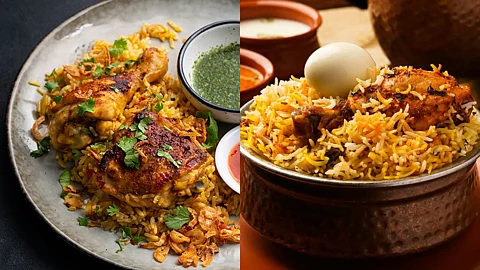
- HOMEGROWN WORLD
- #HGCREATORS
- #HGEXPLORE
- #HGVOICES
- #HGSHOP
- CAREERS
- ABOUT US
- CONTACT US

Although the Mughal Empire never expanded its political influence to Southeast Asia, its culinary impact extended far beyond the Indian subcontinent. One of the most enduring legacies of this cultural exchange is evident in Thai cuisine, which incorporated elements of Mughal cuisine through centuries of trade, migration, and cultural exchange. From royal courts to street food vendors, traces of Mughal gastronomy remain woven into Thai culinary traditions, primarily through Muslim communities and Indo-Persian trade connections.
Mughal cuisine — a layered blend of Persian, Central Asian, and Indian flavours — developed between the early 16th to the mid-18th centuries. It was known for its use of fragrant spices, such as cinnamon, cardamom, nutmeg, and cloves, as well as techniques like dum pukht (slow cooking), tandoori grilling, and yogurt marinades. While these influences began reaching Thailand's shores through Persian and Indian Muslim merchants as early as the 13th century, they thrived during the Ayutthaya period (1351–1767). Persian Muslims not only traded but also integrated into Thai society through intermarriage and political alliances, establishing culinary footholds in royal kitchens and merchant households.
The most notable legacy of Mughal culinary influence in Thailand is the Massaman curry, often referred to as the most "un-Thai" of all Thai curries. Its name is believed to come from 'Musalman', an Indo-Persian word for Muslim, and the dish demonstrates the blending of Mughal and Persian flavours — including star anise, cinnamon, clove, and nutmeg — into local Thai cuisine.
Unlike traditional Thai curries, which rely heavily on fresh herbs, Massaman features a spice profile more similar to that of North Indian or Persian stews. It is a fusion dish in the truest sense, combining indigenous Thai ingredients like coconut milk with imported spices, nuts, and meat — a delectable culinary record of transregional exchange.
Another clear example of this culinary cultural exchange is Khao Mok Gai, a Thai-Muslim twist on biryani. The dish features marinated chicken cooked beneath a layer of spiced rice — a key component of the biryani method introduced to Thailand by Indian Muslims. While retaining the core Mughal style of the dish, Thai cooks adapted it by incorporating lemongrass, galangal, kaffir lime leaves, and coconut milk. The result is a one-of-a-kind blend that respects its Mughal origins while being distinctly Thai.
Beyond individual dishes, the Mughal legacy also shaped cooking methods. Dum pukht, or slow-cooking over low heat — a key technique of Mughal cuisine — resonated in Thai culinary traditions, particularly in royal and Muslim kitchens. Similarly, while Mughal cuisine heavily relied on ghee and dairy, Thai cooks replaced these with coconut oil and coconut milk, demonstrating adaptation rather than imitation.
Thai Muslim communities, particularly those of Persian and Cham descent, played crucial roles in preserving and passing down these culinary traditions. By the 17th century, Persian Muslims had integrated into the noble class of Siam and had a significant influence on the elite culinary culture. Meanwhile, Cham Muslims — originally from Vietnam and Cambodia — settled throughout Thailand, introducing additional Islamic and South Asian culinary influences. These diaspora communities significantly contributed to shaping what is now often seen as mainstream Thai cuisine.
Today, dishes like Massaman curry and Khao Mok Gai are considered quintessential Thai foods. Their roots in Mughal cuisine are rarely highlighted, but they provide insight into how food travels — not just across regions, but through cultural identities, religions, and adaptations. The Mughal influence on Thai cuisine is not only a historical note; it is a living tradition cooked, served, and consumed every day across Thailand.
This culinary exchange serves as a reminder that complex food cultures and histories often develops not through conquest but migration, intermarriage, and trade. The story of Mughal influence on Thai cuisine illustrates how diverse traditions can merge in unexpected ways, enriching the cultural fabric of a region without erasing its local essence.
If you enjoyed reading this, here's more from Homegrown:
Indian Food Writers Are Using Their Work As Tools Of Cultural Connection & Preservation
Archana Pidathala’s ‘Five Morsels Of Love’ Defies The Flattening Of Indian Culinary Art
Whose Dal Is It Anyway?: Why There's No Such Thing As A Definitive 'Indian' Cuisine
